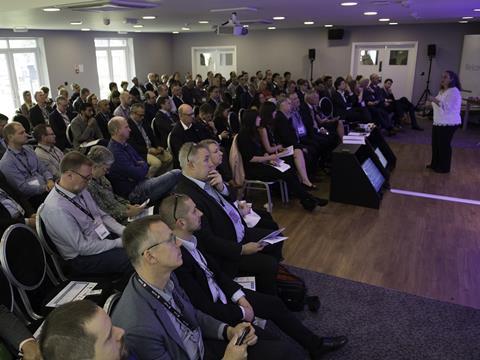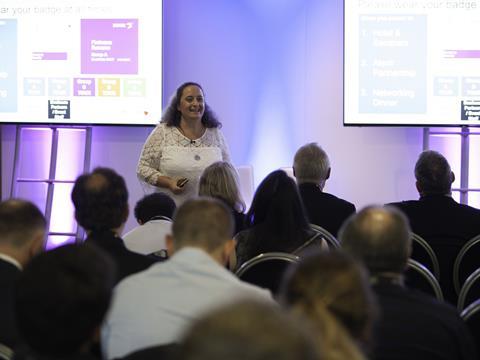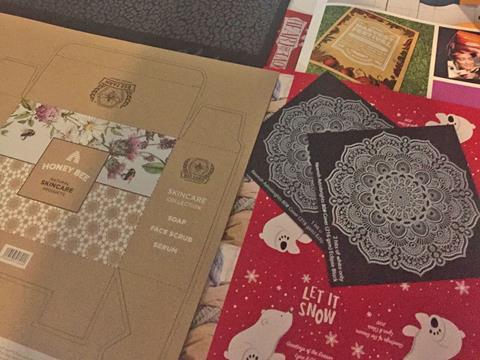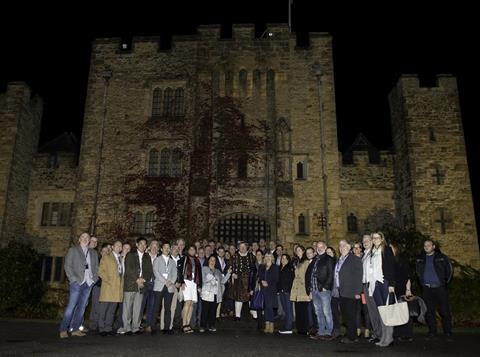
With an objective of creating an atmosphere conducive to forming a packaging community within the digital printing sphere, Xerox achieved this feat by bringing together 130 international attendees from across the supply chain at its Xerox Digital Packaging Live! event.
Held in Hever, UK, on 19th October 2017, the setting steeped in history juxtaposed strikingly with the event’s immersion into the advanced age of digital printing. A packed agenda of presentations and seminars, and an opportunity to meet with Xerox business partners including a tour of the litho and digital zones at Alexir Partnership, was finished off by a networking dinner at Hever castle.
In his opening presentation, Hubert Soviche, vice president of graphic communications solutions group, Xerox, discussed that the digital print market is expected to reach $153 billion by 2021. He added that of the 48 trillion pages printed worldwide in 2016, only three per cent were digital, conveying the sense that we are on the cusp of a transformative technology with enormous scope for growth.

Claire Virazels, marketing manager, Xerox
Claire Virazels, marketing manager, Xerox, highlighted that the expected annual growth of digital colour folding cartons is 40 per cent. Providing a continuing legacy, Xerox brings to the marketplace its Xerox Automated Packaging Solution, the first and only fully automated digital packaging solution for folding cartons combining the Xerox iGen® Press, running in line with Tresu Pinta Coater and Kama Die Cutter. The current iGen® 5 offers a configurable platform, for gamut extension and specialty inks. As one example of its progression, since October 2nd it offers the capability of printing and creating specialty effects with Xerox® white dry ink, with automated multi-pass up to two layers of white + CMYK.
At the event, Packaging Europe’s Libby White sat with Mr Soviche, vice president, and Alan Clarke, marketing manager, to discover more about some of the hot topics covered on the day, and the possibilities of digital printing and market opportunities.

Hubert Soviche, vice president of graphic communications solutions group, Xerox
LW: Your digital printing solutions address market trends and customer demands, and in turn digital printing is now beginning to influence the marketplace, i.e. by supporting small brand owners. Can you tell me your thoughts on the changing marketplace, and why events such as today are important for generating discussion?
HS: We are looking at a market bigger than automotive, bigger than music. There have been a lot of interesting changes in the past few years, and it’s only the beginning of a fantastic journey for all of us; for the packaging converter and commercial printer, the marketing service provider and the brand owner.
And when we talk about print, it’s much more about communication. When I say communication, I mean brand communication.
Our customers were mainly printers, now they are market service providers. This is a huge change. Due to our printing capabilities and thanks to the end to end solution we now offer (from the data, to the finished document or folding carton) we can help our market service providers support their customers- the brand owner- to improve their brand image.
We aim to create a packaging community, as you have witnessed today. This event brings together the brand owners, the converters, the commercial printers, the experts, and the media.
It’s not only print, it’s a world. Xerox has the same outlook for other segments such as books, photo, and transactional. It’s all about expertise and to catch business opportunities for our customers, and in turn the customers of our customer.
LW: It’s clear that digital printing offers greater customisation, personalisation, and opportunities for the consumer to feel more engaged. How can digital print on packaging open a new dialogue with the consumer?

HS: The point is to enlarge communication capabilities and to address the consumer more directly, such as through different substrates. One solution where this is possible is through labels, an area which is continuously developing, or by printing on different materials such as directly onto the plastic packaging. We have developed another technology that can print 360 degrees for example.
AC: Looking forwards, a big driver is the consumer and their imagination. A great example in terms of personalisation is with a major car brand- when you go onto their website and you modify a car you can choose the wheels, the colours, the seats, and then when the brochure arrives it is not a standard brochure. It is based on what you chose on that website.
There’s no reason why that formula can’t be adapted. Why not packaging? The customer can choose online for example the look and feel of the package for a gift and it can then be personalised or customised accordingly.
Once the orders arrive with the printer or the converter something needs to happen to it i.e. it needs to be imposed or the finishing needs to be setup. Every time you touch something in the production process, even if that means setting up the finishing by changing a few dials, that costs money. The software workflow is taking over now whereby when the job comes in it can assess it, see the stock, set the engine up, set the finishing up. The consumer ultimately creates the job online.
Printing technology and capabilities are continuously improving, new inks are being developed, and the software that brings it all together allows a platform for innovation, solutions, and ideas to be brought to the market.
LW: At your event, Richard Askam, founder of communications agency WNC, discussed the role of the communication agency within the development process. Do you consider bridging the gap between brand owners, printers and converters as one of the biggest challenges?
HS: Yes and no.
The communication agencies are for us an important player and step in the print production process. However they hold the position to help or perhaps indeed blinker their clients. We aim to work alongside the agency to show them the digital opportunities they can give their customers.
We have also created specifically for communication agencies a place called Brainstore in Paris, where they can try out their ideas with Antalis substrates, printed on our iGen® Press, exactly to address this gap.
LW: What opportunities do you see in the development of the digital printing market over the next few years?
HS: We see the traditional segments in the printing market as areas of opportunity such as photo, books, transactional, cross-media, and catalogues. I’d like to emphasise again that 48 trillion pages were printed worldwide in 2016.
If we see just one percent more of this traditional world of print converting to digital solutions, from three to four per cent, we would double our turnover.











